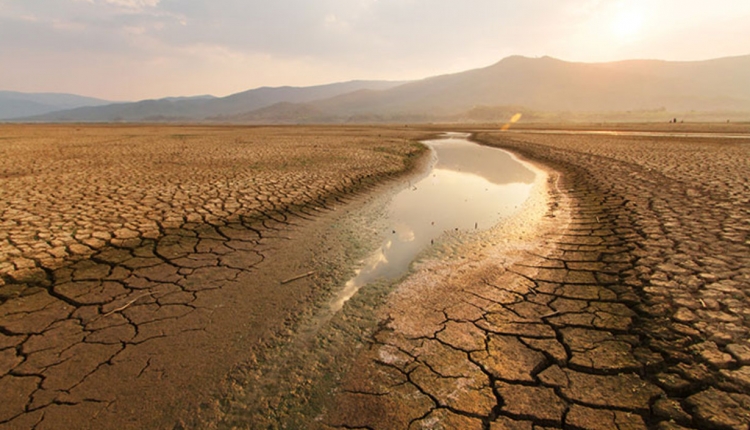
Whiskey is for drinking; water is for fighting over. This is far from an original statement, but no truer mantra has ever been spoken.
The western U.S. is in all-out battle over water, and it’s being fought in localities, states, and nationally . . . all the way up to the Supreme Court. It’s a complicated war because the rules and water sources are so diverse. There are a plethora of treaties, compacts, and laws to consider, negotiate, or renegotiate.
Complicating the situation are widespread drought conditions across the West and urban expansion in cities such as Phoenix, Las Vegas, San Diego, and Los Angeles. It should be noted that much of the West is arid by nature, even without a drought. In some areas, environmental regulations that were put in place to improve the status of endangered aquatic species are further limiting water resources for human or agricultural use.
The situation is bad — very bad — and alfalfa along with pasture and other forage acres are in the crosshairs on the war’s front line.

“We are seeing a demonization of Western irrigated agriculture and, in particular, alfalfa production,” said Dan Keppen at the World Alfalfa Congress held in San Diego last November. Keppen is the executive director of the Family Farm Alliance, which is an organization that advocates for family farmers, ranchers, irrigation districts, and allied industries in 17 Western states. Its mission is to ensure the availability of reliable, affordable irrigation water supplies to Western farmers and ranchers.
To highlight the urgency of the water situation, Keppen noted that there were 695,000 acres of land fallowed in the Central Valley of California during 2022. This region relies on reservoir fill from the Sierra Nevada Mountain’s winter snowmelt, which lately has been deficient. For the federal Klamath Irrigation Project straddling the California-Oregon border, farmers only received 15% of their normal water allocation. Some irrigators in Arizona decided to keep their fields fallow because of power costs. Electricity costs jumped because of lower reservoir levels while natural gas prices were also high during the past year.
“California is a hard place to farm right now, and other states are moving in the same direction,” Keppen said. “Currently, there are a multitude of environmental and labor regulations that have added significant compliance costs in the past 10 years.”
These regulations are exacerbating the natural drought. Keppen said that the method that agencies are using to protect endangered fish species in places like California’s Central Valley and the Klamath Basin is taking water that was originally developed and stored for agriculture and allocating it for the benefit of certain species. “What’s frustrating is that there is no empirical evidence to suggest that the water reallocation is helping the targeted species,” Keppen shared.
River woes
If northern and central California’s water situation is thought of as critical, then the Colorado River Basin is even more dire. As background, the Colorado River provides irrigation water to seven Western states — Colorado, Wyoming, Utah, New Mexico, Arizona, Nevada, and California. Lake Powell is formed by the Glen Canyon Dam, which is close to the Utah–Arizona border. Further downstream, Lake Mead is formed by the Hoover Dam. These lakes provide the region’s needed water reserves and are sources for hydroelectric power generation.
“I don’t see things getting much better, particularly in the Colorado River Basin,” Keppen said. “Urban areas are expanding rapidly, which hikes the demand for limited water. As a result, some interests are pressing to fallow thousands of additional farmland acres in 2023.”
Many people, including Keppen, believe there is a very real possibility that Lake Mead water levels could get down to dead pool, the point at which water no longer flows through the dam. Even before that occurs, hydroelectric power generation will cease from a lack of adequate water pressure through the dam. A dead pool water level is also a justified fear for Lake Powell, where boat docks are already many feet from the water’s edge.
“Currently, the government is looking for ways to back water up to keep dead pool from occurring,” Keppen noted. “A part of their plan is to limit water to farmers and hopefully compensate them in return. Such a plan, if implemented in a way that solely relies on agriculture, would result in 1 million acres of farmland being fallowed to meet the targeted 2 to 4 million acre-feet of water cuts.”
Many entities and Keppen still believe that a workable solution and plan for the Colorado River Basin is attainable. “Answers can be found that do not pit urban and agricultural interests against each other,” Keppen said, “but the issues are complex.”
Adding to that complexity is that some of those with senior water rights are understandably reluctant to use less water for fear of permanently losing their allocation.
The stakes are high
The complexity of the water situation in the West is undeniable, but the stakes are higher than you’ll find on any Las Vegas casino floor.
“There’s probably never been a more important time to protect American food production,” Keppen said. “Western irrigated agriculture, including alfalfa and other forage production, has to be viewed as a priority in the context of national security. This statement is based on what we’re seeing in the world and in our country today.”
He referenced the war in Ukraine, which has landed a massive blow to world food production and created pockets of food deprivation. “Global hunger is back to record levels and is rising,” Keppen asserted.
According to the 2022 Global Agricultural Productivity (GAP) Report, Keppen said that total factor productivity (TFP), which rises when producers boost their output while using the same or fewer inputs, is at its lowest level of growth since the report was initiated in 2010. The 2022 GAP report found that current efforts to accelerate global agricultural productivity growth are inadequate to meet future food needs.
“The western U.S. has been a long-time, proud agricultural powerhouse,” Keppen said. “Our country has consistently run an agricultural trade surplus, but that has changed in recent years. In 2019, the U.S. ran a trade deficit for the first time in 50 years. The USDA projects it will happen again in 2023. Imported Mexican fruits and vegetables are driving this deficit,” he added.
Fallowing vast acres of agricultural land, even if farmers are compensated, will significantly lower domestic production and make the country more dependent on imports. In some cases, it may shift production to other U.S. regions, which will dictate agricultural products be transported back to the West, raising consumer costs.
“Simply cutting off water will have a devastating effect on not only the farmers, but also the greater rural communities that depend on agriculture for their well-being,” Keppen explained. “In California’s Imperial Valley, there is no other water source above or below ground than the Colorado River. The residents of the valley rely solely on irrigated agriculture for their economic survival.”
Keppen noted that one of the silver linings to the drought is that it’s bringing heightened political and public attention to the needs of Western agriculture and rural communities. In the federal bipartisan infrastructure law, $8.3 billion was allocated for the Bureau of Reclamation. Previously, it was hard to draw enough political attention to get that level of funding, Keppen said. Also, the Inflation Reduction Act included $4 billion for Western drought mitigation, especially in the Colorado River Basin.
Alfalfa under fire
It’s not surprising that alfalfa is front and center in the water crisis discussion. A majority of the alfalfa hay produced in the U.S. comes from Western states. Most of this production is irrigated. Further, alfalfa, with its multiple cuts, generally needs more water annually than many other crops.
“The two big arguments being made are that alfalfa should be abandoned in favor of higher value crops or ones that use less water,” Keppen said. “The dissenters don’t realize that farmers will only grow crops that people will buy. Further, the Western agricultural community was built on the local supply of feed and food. Relocating alfalfa production, for example, would increase fuel costs and greenhouse gas emissions. These reports also fail to mention that the Lower Colorado River Basin states have the highest alfalfa yields in the U.S.,” he added.
Another frequently heard argument regarding Western alfalfa is that hay export sales are the equivalent of shipping water overseas through field crops grown in Arizona and California. Keppen pointed out that this argument falls apart because it doesn’t address other export products that also use a lot of water or consider products that are imported and used by U.S. residents.
“Alfalfa has proved to be highly flexible and resilient in surviving droughts while sustaining productivity, even when as little as half of the water requirement is applied,” Keppen asserted.
A major research emphasis in the West has been to find ways to keep alfalfa profitable while reducing traditional water application amounts. These efforts include developing irrigation systems that reduce water application losses and, in turn, require less water to be applied. Government assistance for implementing these new technologies would help accelerate their adoption.
Deficit irrigation is also a practice that has been researched, promoted, and used for alfalfa where water is being limited. With this approach, alfalfa is fully watered early in the season to capture maximum yield and forage quality, then no water is applied during the hot mid-summer when both yields and forage quality are lower. The crop then goes dormant as it would during a Northern winter. When rains or irrigation return, alfalfa has the ability to break dormancy and return to full production. Grower adoption of these practices will no doubt need to increase in the years ahead as both agricultural and urban interests will need to make concessions.
Perhaps abundant winter precipitation will return to the West on a regular basis, but that’s not a bet we can afford to take. Finger pointing from either the urban or agricultural sides won’t get the water problem solved. There will need to be concessions across the board, but those concessions shouldn’t include completely shuttering the Western communities and businesses that were built and rely on irrigated agriculture for economic survival.
This article appeared in the February 2023 issue of Hay & Forage Grower on pages 10-11.
Not a subscriber? Click to get the print magazine.

